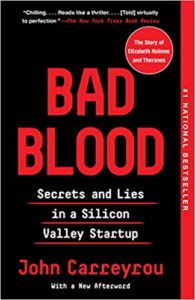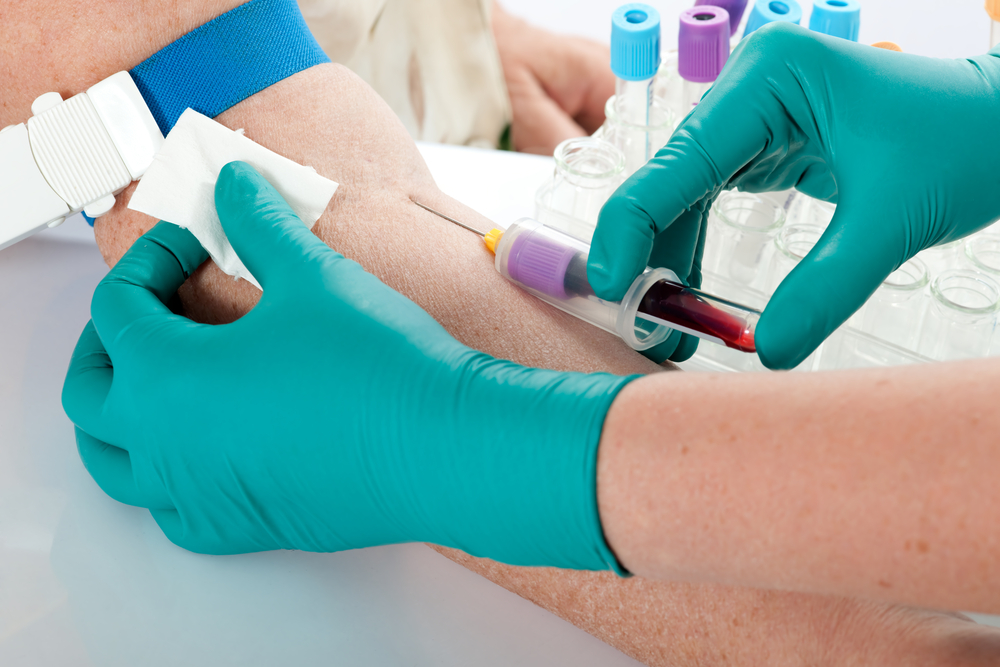Innovation requires big dreams. Changing the world isn’t for the faint of heart, the unadventurous, or those who aren’t willing to take chances. But those big dreams have to be backed up by hard work, integrity, and endless research and analysis. John Carreyrou’s book, Bad Blood: Secrets and Lies in a Silicon Valley Startup looks at a startup founder and company who may have had the first, but who certainly lacked all the rest.

I still remember the first time I heard about Elizabeth Holmes’s company Theranos. It was this new medical tech company that was going to revolutionize lab tests for blood. Instead of painful blood draws from veins, Theranos had technology that was going to allow hundreds of lab tests to be run from the drop of blood drawn from a single finger stick. With aging parents who seemed to need tube after tube of blood drawn whenever something was amiss, and with a husband who was decidedly needle-phobic, I instantly saw that what Theranos promised was revolutionary. It could improve the quality of life for millions. Russ Roberts was excited, too, and back in 2015 had enthusiastic conversations with Eric Topol and with a panel of economists about Theranos and its probable impact on American health care.
Was I also a little inspired by the fact that the founder of Theranos, Elizabeth Holmes, was a young woman? Yes, I was. It seemed about time to have an exciting new tech story with a woman at the head.
The collapse of Theranos is now a story as familiar as the South Sea Bubble and the subprime mortgage crisis. Carreyrou’s gripping investigative report takes readers through every grim step of the company’s sky-high goals and its underground lies, double dealings, and secrets.
You may think you know how deeply the misrepresentations ran. I thought I did. But I read Carreyrou’s book in sickened gulps, scarcely able to believe how bad it really was. Theranos’s machines didn’t work. They never worked. Even at their very best, they were only able to run about a dozen of the 250 tests they said they could run. For some of those tests, they failed quality control checks 87% of the time. They couldn’t even reproduce their own woefully inaccurate results.
Worse than that, Theranos knew how bad their machines were. When Holmes demonstrated them for potential investors or for companies–like Walgreen’s–with whom she hoped to build long and lucrative relationships, she didn’t run real tests as part of her demo. Instead, she previously recorded tests, presented as if they were happening in the moment. Carreyrou explains:
That revelation hits the reader on page 6 of Carreyrou’s book. The almost 300 pages that follow record lie after lie, in a constantly escalating spiral, until, at one point, Holmes is buying blood testing machines from other companies, testing patient blood with them, and claiming that the tests were done by Theranos machines.
The truth is that Elizabeth Holmes and Theranos were never able to do what they claimed. They risked the lives of every patient whose blood they tested.

I’m still shaken by Carreyrou’s book, and I recommend it to everyone with an interest in startup culture or healthcare. I recommend it most strongly, however, to people who are (like me) a big fan of market tested innovation. It’s a cautionary tale that will stay with you.
The Theranos story is so interesting to me, in fact, that I’ll be following this review with a series of 3 posts about the podcast, The Dropout, which also considers Holmes and Theranos. Carreyrou’s book told me everything but “Why.” And I’m hoping the podcast might have some answers.


READER COMMENTS
Brandon Reinhart
Aug 12 2020 at 10:05pm
Thanks for the link to that postcast.
Brandon Reinhart
Aug 12 2020 at 10:05pm
Podcast even :/
Comments are closed.